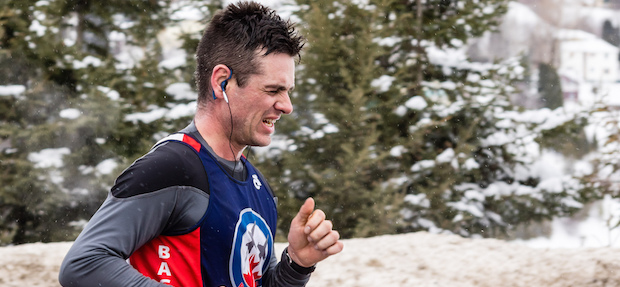
As the days grow colder and the nights draw in, even the most dedicated runners and cyclists could be forgiven for cutting back on the time they spend exercising outside. Spending evenings inside in the warmth is definitely tempting when the alternative involves sub-zero temperatures or the kind of drizzle that soaks you right through. So what can you do to make sure you’re still able to exercise safely at this time of year?
Be prepared
Preparation is key to remaining on top of your exercise regime. As with all work outs, you’ll need to make sure you’ve properly warmed up, and those with respiratory or heart conditions should take extra precautions – we’d advise checking with your doctor before exercising in colder months.
It’s also important to not get caught off guard when it comes to the weather conditions – don’t wait until you open the door to begin your run, check the forecast in advance! Protect yourself against the worst of the cold and wind chill by dressing warmly, and layer up so you can discard outer layers as the exercise warms you up. It’s always better to wear several items of clothing that can be removed as you begin to sweat, then put back on when you cool down. You should also pay extra attention to protecting your extremities, including your head, hands and feet, as blood flow will neglect these areas in favour of keeping your core warm. Wear thick thermal socks, gloves, and a hat, layering up if necessary.
Two of the biggest risks of outdoor exercise in winter are frostbite and hypothermia, both of which can be combatted by taking precautions and dressing appropriately for exercise. Keeping your skin covered and your temperature up will minimise risk, but it’s important to be able to recognise the signs of both conditions. Frostbite will primarily affect exposed areas of skin, such as the face and extremities, and will usually present as numbness, tingling or stinging. Hypothermia is extremely low body temperature and is often identified as shivering, problems with speech and coordination, and exhaustion. If you suspect frostbite or hypothermia, seek medical attention urgently.
Finally, if the weather conditions are too extreme, it’s advisable to exercise indoors that day. If regime is important to you, start thinking now about how you can take your workout inside when the weather is terrible. It’s always better to be safe than sorry, so make sure you use common sense and put your wellbeing first.
If you need more advice on exercising in winter months, why not pay a visit to one of our clinics in Birmingham, Halesowen or Kidderminster?
If you’ve got a question for our team, just email it to us at ask@thephysiotherapypartners.co.uk.



